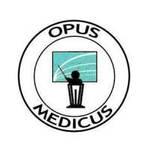
Ulcerating and Necrotizing (non-vasculitic) Skin Disorders: Histopathologic Keys to Clinical Correlations, a How-to Guide
 hosted byOpus Medicus, Inc.
hosted byOpus Medicus, Inc.


Ulcerating and Necrotizing (non-vasculitic) Skin Disorders: Histopathologic Keys to Clinical Correlations, a How-to Guide is organized by Opus Medicus, Inc.
Dates:
Last Review Date: 04-Jan-2022
Expiration Date: 03-Jan-2025
Topics:
• How-to guide to evaluating skin specimens with ulceration and necrosis.
• Types of necrosis.
• Physical injuries.
• Vascular insufficiency: histologic features of ischemia and vasculopathy disorders.
• Herpes simplex and Varicella-Zoster.
• Arthropod bites (including tick and brown recluse spider)
• Infections including ecthyma gangrenosum.
• Necrobiosis lipoidica and necrobiotic xanthogranuloma.
• Protothecosis.
• Acanthamebiasis.
• Pyoderma Gangrenosum.
• Calciphylaxis.
• Pancreatic fat necrosis.
• Necrotizing fasciitis.
Course Description:
This course addresses the need for recognition of critical differential diagnoses in skin specimens with the principle finding of ulceration and/or necrosis. It employs an algorithmic approach using a microanatomic pattern to delineate a list of potential etiologies and elucidates key histopathologic features that enable the identification of specific entities of clinical importance. Essential elements of the clinical context will be highlighted when required for further diagnostic differentiation.
Objectives:
• Recognize key features present in a skin specimen with ulceration/necrosis to develop a specific list of differential diagnoses.
• Understand the optimal type and location of skin sample for the best diagnostic yield.
• Utilize patient demographics and clinical history, including information on underlying disorders, a specific timeline of lesional development, lesional morphologic features, and anatomic site to enhance the specificity of diagnosis.









